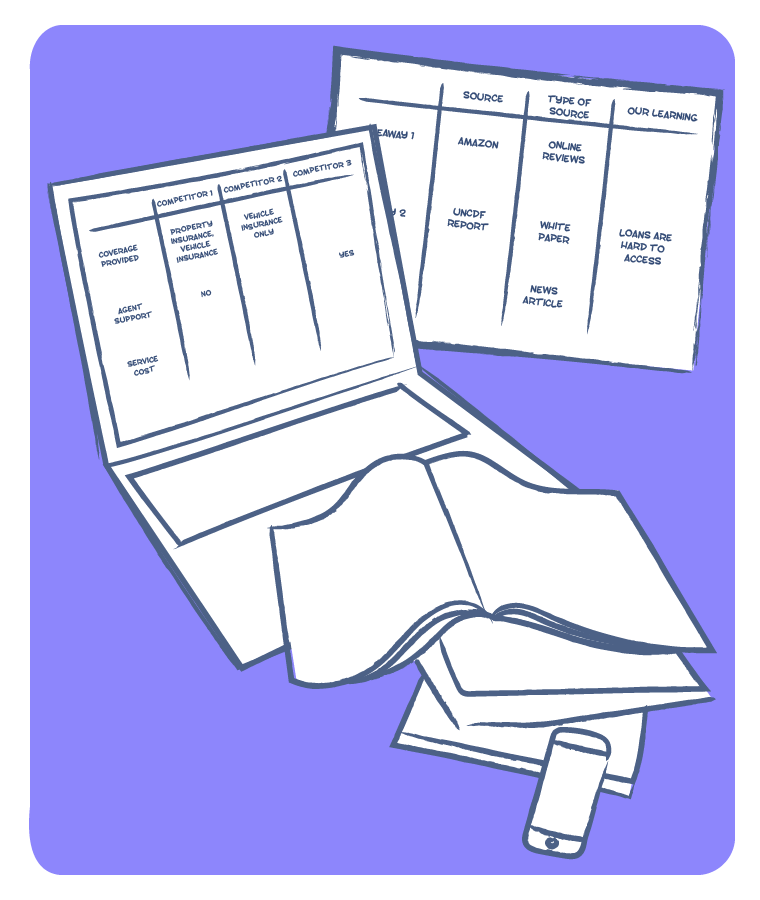HUMAN CENTERED DESIGN | DISCOVERY
Secondary Research
30 Min+
Secondary research is done by reviewing published knowledge and news content (i.e., not in person research with users and other stakeholders). Secondary research can be done via online and offline channels.
USE CASES
- Map competitors to compare and understand relative strengths and weaknesses.
- Build a foundational understanding of broad political, economic, social, cultural, technological, environmental and legal trends.
- Understand events, opinions, decisions, trends, etc. with regard to specific products, services, and organisations.
- Understand an emerging theme or topic from a multi-dimensional angle.
LIMITATIONS
Secondary Research can be very time consuming and confusing — the nature, quality, and range of sources to include in research is crucial to consider.

